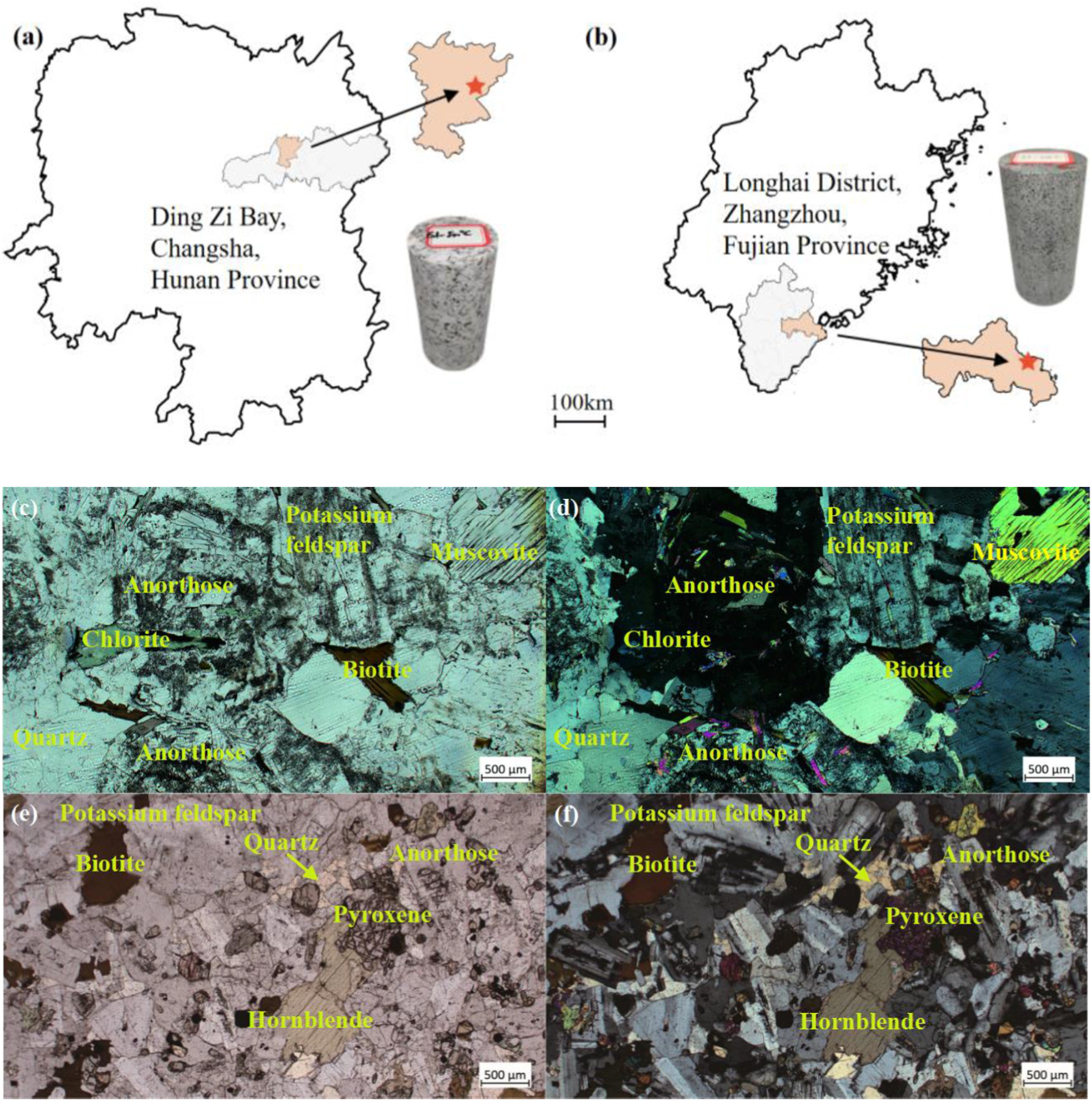JRMGE / Vol 16 / Issue 2
Temperature dependence of mechanical properties and damage evolution of hot dry rocks under rapid cooling
Longjun Dong, Yihan Zhang, Lichang Wang, Lu Wang, Shen Zhang
Show More
a School of Resources and Safety Engineering, Central South University, Changsha, 410083, China
b School of Geosciences and Info-physics, Central South University, Changsha, 410083, China
2024, 16(2): 645-660. doi:10.1016/j.jrmge.2023.08.014
Received: 2022-12-22 / Revised: 2023-08-03 / Accepted: 2023-08-14 / Available online: 2023-11-20
2024, 16(2): 645-660.
doi:10.1016/j.jrmge.2023.08.014
Received: 2022-12-22
Revised: 2023-08-03
Accepted: 2023-08-14
Available online: 2023-11-20
Understanding the differences in mechanical properties and damage characteristics of granitoid under high temperatures is crucial for exploring deep geothermal resources. This study analyzes the evolution of the acoustic emission (AE) characteristics and mechanical parameters of granodiorite and granite after heating and water cooling by uniaxial compression and variable-angle shear tests under different temperature gradients. We identify their changes in mesostructure and mineral composition with electron probe microanalysis and scanning electron microscopy. Results show that these two hot dry rocks have similar diagenetic minerals and microstructure, but show significantly different mechanical and acoustic characteristics, and even opposing evolution trends in a certain temperature range. At the temperatures ranging from 100 °C to 500 °C, the compressive and shear mechanical properties of granodiorite switch repeatedly between weakening and strengthening, and those of granite show a continuous weakening trend. At 600 °C, both rocks exhibit a deterioration of mechanical properties. The damage mode of granite is characterized by initiating at low stress, exponential evolutionary activity, and intensified energy release. In contrast, granodiorite exhibits the characteristics of initiating at high stress, volatile evolutionary activity, and intermittent energy release, due to its more stable microstructure and fewer thermal defects compared to granite. As the temperature increases, the initiation and propagation of secondary cracks in granodiorite are suppressed to a certain extent, and the seismicity and brittleness are enhanced. The subtle differences in grain size, microscopic heterogeneity, and mineral composition of the two hot dry rocks determine the different acoustic-mechanical characteristics under heating and cooling, and the evolution trends with temperature. These findings are of great significance for the scientific and efficient construction of rock mass engineering by rationally utilizing different rock strata properties.
Keywords: Hot dry rock, Acoustic emission, Mechanical properties, High temperature, Damage
Article Data
Author(s) Information
Lichang Wang

Lichang Wang received his PhD from the School of Geosciences and Info-physics, Central South University, Changsha, China. Currently, he is a lecturer at the same university. His research interests include deep drilling rock mechanics, crystalline mineral mechanics, and methods for locating and identifying seismic sources. Dr. Wang's work has been supported by the National Natural Science Foundation of China, the National Key Research and Development Program of China, and the Hunan Provincial Natural Science Foundation for Excellent Young Scholars. He has authored over 40 papers published in related journals and holds more than 10 patents. He is a member of the expert panel of International Society for Trenchless Technology (ISTT) and China Society of Geology-Trenchless Technology Committee (CSTT).

